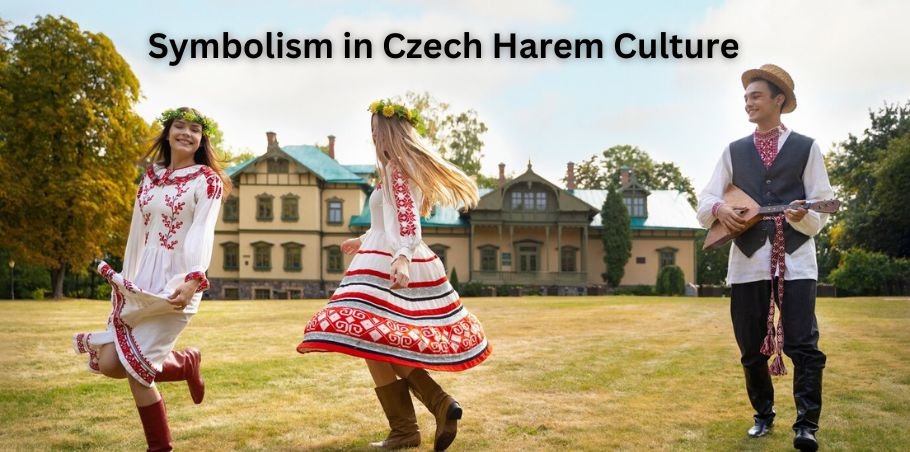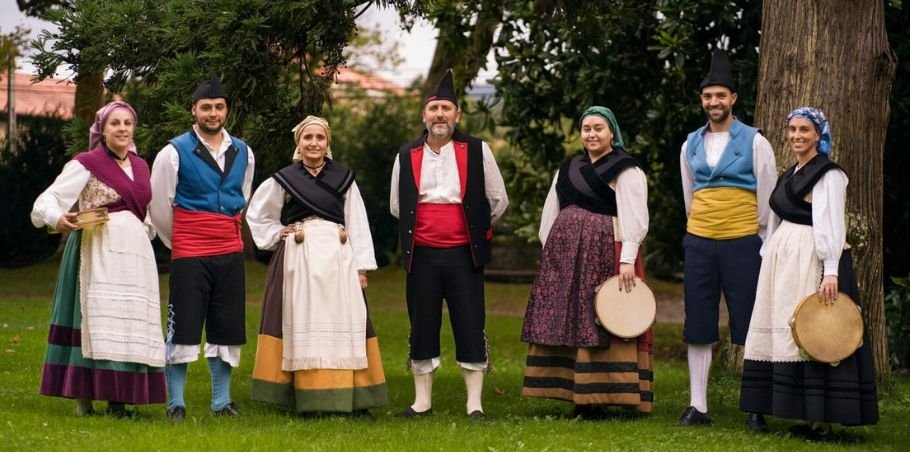The term “Czech Harem” has piqued curiosity around the world due to its cultural and social implications. Originating from a historical concept, the harem signifies a collection of women under one household or leader. In the Czech context, however, it has taken on unique interpretations, influenced by modern-day culture, media, and societal values.
Historical Context of Harems
Harems have a long history rooted in various cultures. Traditionally, they were common in certain Middle Eastern and Asian regions, often serving as exclusive spaces for women in royal or noble households. The concept extended beyond mere living arrangements, representing complex social hierarchies and personal relationships.
In contrast, a “Czech Harem” does not strictly adhere to these historical roots, instead reflecting a more modern, symbolic interpretation influenced by media and cultural narratives.
Czech Culture and Modern Interpretations
Czech society has a unique way of viewing traditional structures, blending them with modern ideals and values. This cultural adaptation has allowed for a distinct interpretation of harems, different from their historical counterparts. In the Czech setting, it might signify personal choices, lifestyle diversity, or simply an artistic expression, rather than an institution of enforced roles. The Czech Republic has a rich cultural tapestry that combines traditional values with modern, progressive thinking. This blending of old and new influences provides a unique perspective on concepts like the “Czech Harem,” where traditional frameworks are reinterpreted through a contemporary lens.
In the media, this concept has been portrayed with a hint of irony or humor, often serving as a social commentary on the evolving nature of relationships. Artists, writers, and filmmakers may reference the “Czech Harem” to explore themes of freedom, companionship, and the dynamics of power within relationships, giving it a unique place within Czech culture. The result is a nuanced interpretation that resonates with a society that respects tradition but is not bound by it, allowing for a more inclusive, flexible, and personally meaningful understanding.
The Influence of Czech Media

Czech media has played a significant role in defining and popularizing the idea of the “Czech Harem.” From literature to film, various works have explored this theme, offering a blend of intrigue, humor, and social commentary. In movies and novels, harems are often used as a metaphor for complex relationships or societal dynamics, captivating audiences with their multifaceted portrayals. One key way Czech media influences these interpretations is by using the “Czech Harem” as a storytelling device to explore the intricacies of human relationships. Directors, authors, and artists often use it to dive into themes of loyalty, power, and individuality within relationships, portraying these ideas in a way that resonates with contemporary audiences. Unlike literal representations, the Czech Harem in media frequently symbolizes fluidity in relationships, the balance of power, and the dynamics of choice and personal freedom.
Popular films and series may use the concept to depict unique, layered characters navigating complex relationship structures, often challenging societal norms or reflecting the push and pull between traditional values and modern ideals. This use of storytelling not only entertains but also invites viewers to question and think critically about the evolving nature of personal connections in modern Czech society.
Cultural Myths and Misconceptions
The concept of the Czech Harem is surrounded by myths, often misconstrued as a literal adaptation of traditional harems. However, the reality is that this term is more of a cultural symbol. In the Czech setting, it doesn’t necessarily imply polygamy or control but rather explores the depth of human relationships and social connections. One common misconception is that a “Czech Harem” implies polygamy or a strict, patriarchal structure. In reality, the Czech interpretation is much more fluid and personal, often centered around relationships that prioritize equality, mutual respect, and individual choice. Unlike the historical harems associated with royalty or nobility, which involved power dynamics and control, the modern Czech harem concept represents a consensual, often artistic exploration of alternative relationship models.
Another myth is that the Czech Harem is widely practiced as a lifestyle choice, which isn’t accurate. For most people, it exists as a cultural or artistic metaphor rather than a literal living arrangement. It is frequently used in media and art as a way to discuss themes of love, loyalty, companionship, and freedom, allowing individuals to explore these themes without being bound by traditional roles or definitions.
Czech Harem in Art and Media
Art and media have brought the concept of the Czech Harem to the forefront, offering insight into its symbolic meanings. Paintings, films, and literature have all contributed to the popularization of this theme, each work providing a different lens through which to view the complexities of relationships and cultural identities. The concept of the “Czech Harem” has found a unique and expressive home in Czech art and media, where it is often used as a vehicle for exploring complex human emotions and relationships. Artists, filmmakers, and writers draw on this theme to examine modern relationship dynamics, societal expectations, and individual freedom, frequently presenting it in a way that challenges traditional norms and encourages a rethinking of romantic and social connections.
Symbolism in Czech Harem Culture

The “Czech Harem” carries with it layers of symbolism, often representing power, unity, and sometimes, conflict within relationships. It serves as a metaphor for the evolving dynamics between individuals in modern society, portraying themes of loyalty, companionship, and personal freedom. Symbolism plays a vital role in Czech Harem culture, as it embodies deeper themes related to power dynamics, individual freedom, unity, and the intricate nature of human relationships. In Czech interpretations, the harem is not viewed as a literal structure but as a conceptual and artistic exploration, where each element represents a specific aspect of interpersonal connection.
Social Dynamics and Relationships
The Czech interpretation of a harem sheds light on unique social dynamics, where interpersonal relationships take on an unconventional form. Rather than a strict system, these relationships focus on mutual understanding, emotional connections, and respect, diverging from the hierarchical structure of traditional harems. Communication is central to these dynamics, as open dialogue and emotional transparency create strong foundations for trust. Individuals in this setting often engage in regular, honest conversations about their expectations, needs, and boundaries, which helps prevent misunderstandings and nurtures a sense of closeness. This focus on communication helps each relationship thrive, as people are free to express their thoughts without fear of judgment or criticism.
Ethical and Social Implications
While the concept is intriguing, it also raises questions regarding ethics and societal acceptance. Critics argue that such portrayals may inadvertently reinforce stereotypes or glorify complex relationship dynamics. On the other hand, advocates see it as an exploration of human connection, challenging conventional views on relationships. In modern Czech society, the term “Czech Harem” is more about lifestyle choices than any rigid structure. People may choose to adopt aspects of it as part of their personal or artistic expressions, using the concept as a way to explore and define their own boundaries and relationships.
Czech Society’s View on Harems
Public opinion on this concept is mixed. Some see it as a playful representation of relationship dynamics, while others are more skeptical. However, the Czech Harem has become an intriguing topic in social discussions, especially among younger generations exploring non-traditional relationship structures. While polyamory and the Czech Harem might seem similar on the surface, they differ significantly. Polyamory emphasizes equal partnerships among all members, whereas the Czech Harem may carry cultural nuances that reflect Czech values and social norms, creating a distinct experience.
Role of Women in Czech Harem

Women play a central role in the Czech Harem, often depicted with agency and independence. This portrayal contrasts sharply with the submissive roles often associated with traditional harems. Instead, it offers a narrative where women actively shape their relationships and personal choices. With the growing interest in diverse lifestyles, the Czech Harem has captured international attention, inspiring audiences worldwide to rethink relationship dynamics. This concept’s global influence highlights the importance of cultural diversity in shaping social perceptions.
FAQs About czech harem
Is the concept of a “Czech Harem” widely practiced in Czech society?
No, it is more of a cultural metaphor, often used in media and artistic expressions rather than a commonly practiced lifestyle.
How does the Czech Harem compare to traditional harems in other cultures?
Unlike traditional harems, which were structured and controlled, the Czech Harem is symbolic and reflects modern relationship dynamics.
What are the social views on relationships within this cultural framework?
Czech society has mixed views, with younger generations more open to non-traditional relationships, while others may still view it skeptically.
How do women perceive their role in a Czech Harem?
In this modern context, women are portrayed with independence and agency, often as equal participants in shaping relationships.
Is there a significant difference between the Czech Harem and polyamory?
Yes, while polyamory emphasizes equal relationships, the Czech Harem carries cultural nuances that give it a unique interpretation within Czech society.
Conclusion
The “czech harem” is more than just a term; it is a reflection of how Czech society views relationships, individual choices, and modern interpretations of historical structures. As an evolving concept, it challenges traditional notions of relationships, encouraging a broader understanding of personal freedom and social bonds.










